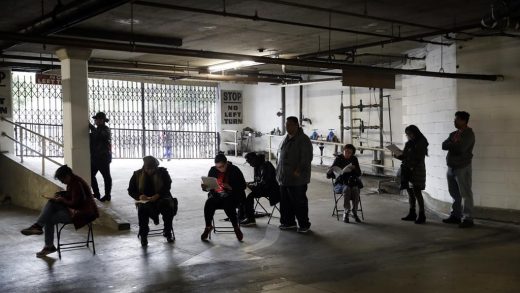Portage and Main has long been considered Winnipeg’s most famous intersection.
Infamous may be more appropriate.
Since 1979, Portage and Main — the confluence of this city’s two main non-river arteries — has been closed to pedestrians. Crossing at the intersection involves navigating a confusing underground concourse populated by businesses that close at 6 p.m., and is accessed by poorly maintained, poorly lit stairwells. Traversing Portage and Main is an accessibility nightmare for those with disabilities, and a baffling ordeal for tourists and newcomers to the city.
The word iconic gets bandied about a lot when describing Portage and Main. What, exactly, is “iconic” about crumbling concrete barricades? The intersection is a reliable source of debate and, once, a go-nowhere plebiscite. And that’s about it.
But now, the city is being presented with a rare opportunity to reimagine our most infamous intersection into something that could, perhaps, be worthy of the “iconic” designation. The current barricades need to come down, owing to necessary repairs above and below ground, and the city is soliciting public feedback on potential replacements, including a circular “sky garden” that would allow pedestrians to move across the intersection — suspended six storeys above traffic. Other ideas at street level include lookout towers, lighting poles, canopies, and “monumental public art.”
Maybe we should revisit former mayor Susan Thompson’s laser-pyramid-and-hot-tubs idea while we’re at it.
Most of these ideas do not involve improved street-level pedestrian access. Making Portage and Main more attractive to residents and visitors alike is a fine goal, but it shouldn’t be the only goal. What if — and hear us out — people could just cross the street? What if Portage and Main was accessible to everyone, every day, in their daily lives?
While a balance can certainly be struck between the practical and the beautiful, what we’re talking about, at the end of the day, is an intersection. Perhaps we should improve its function before we talk about its form.
The thing that makes cities feel alive is vibrancy at street level, the feeling of being part of a larger, kinetic energy that comes from being around a crush of other people — which is why pedestrian-only corridors and squares in other, larger cities tend to be popular tourist attractions.
We can’t erect a concrete fortress around our supposedly iconic intersection and then turn around and wonder why our downtown practically has tumbleweeds rolling across it after 6 p.m. Vibrant city centres need people in them. Not just cars.
When they are navigated properly, scramble crossings – despite their moniker – are safer for pedestrians, according to City of Winnipeg engineers who started looking at them as part of a road safety strategy back in 2019.
A pedestrian scramble-style crossing — in which vehicles are stopped in all directions and pedestrians can move any way, including diagonally, to get where they need to go more quickly and efficiently — could be a potential solution for Portage and Main.
Arguably the most famous scramble crossing in the world is Shibuya Crossing, which, in addition to being functional, is actually worthy of the designation “iconic.” Many cities have them. Oxford Circus in London features a pedestrian scramble; so does Yonge and Dundas in Toronto. Vancouver is looking at installing them as well.
When they are navigated properly, scramble crossings — despite their moniker — are safer for pedestrians, according to City of Winnipeg engineers who started looking at them as part of a road safety strategy back in 2019.
Re-erecting the barricades at Portage and Main — even prettier, more Instagrammable versions — only cements our image as a pedestrian-hostile, car-centric city. Sky gardens, discs, towers, orbs… it doesn’t really matter what you call them. A barricade by any other name is still a barricade.


